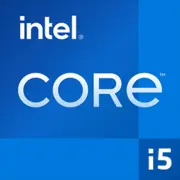Intel Core i5-4430S

Intel Core i5-4430S: Is it Worth Buying in 2025? A Comprehensive Review of an Obsolete Yet Relevant CPU
Introduction: Why Remember Haswell in 2025?
The Intel Core i5-4430S, released in 2013, seems like a relic today. However, even after 12 years, it retains niche popularity due to its low cost (new units range from $50 to $70) and compatibility with budget builds. In this article, we'll explore who might benefit from this "dinosaur," the pitfalls it has, and how to build a PC based around it in the era of DDR5 and 3nm processes.
1. Key Specifications: What's Inside?
Architecture and Process
The i5-4430S is built on the Haswell microarchitecture (22nm). It’s the fourth generation of Core i5, which brought a 5-10% improvement in IPC (instructions per cycle) compared to Ivy Bridge. The chip has 4 cores and 4 threads (no Hyper-Threading), a base frequency of 2.7 GHz, and a maximum turbo frequency of 3.2 GHz.
Performance
- Geekbench 6: 877 (single-core), 2397 (multi-core). For comparison, a modern budget CPU, the Intel Core i3-12100 (2022), scores approximately 1800/4800.
- L3 Cache: 6 MB — sufficient for basic tasks, but limited for data streaming.
- Integrated Graphics: Intel HD 4600. It achieves modest 20 FPS in CS:GO at low settings (1280x720).
Key Features
- Low TDP (65W) — suitable for compact PCs.
- Support for Intel vPro, AES-NI, and VT-x (virtualization).
2. Compatible Motherboards: Searching for Rare Finds
Socket and Chipsets
The processor uses the LGA1150 socket. Compatible chipsets include:
- H81, B85 — basic models (suitable for office tasks).
- H87, Z87 — support for RAID and overclocking (for Z87), but in 2025, new boards with these chipsets are rare.
Selection Tips
- New motherboards (like the ASUS H81M-K) can be found in niche stores for $80–120.
- Check for USB 3.0 and SATA III support — critical for SSDs.
- Avoid boards without UEFI support: they may not work with drives >2TB.
3. Memory: DDR3 and Its Limitations
The i5-4430S supports DDR3-1333/1600 in dual-channel mode. The maximum capacity is 32 GB.
- Real Examples:
- 8 GB DDR3-1600 (2x4 GB) — $25–30 (new modules).
- 16 GB DDR3-1600 — $50–60.
Problems:
- DDR3 is slower than DDR4/DDR5: bandwidth of up to 25.6 GB/s versus 38.4 GB/s for DDR4-2400.
- Higher power consumption (1.5V versus 1.2V for DDR4).
4. Power Supply: How Many Watts Do You Need?
With a TDP of 65W and no discrete graphics card, a power supply rated at 300–400W will suffice (for example, the be quiet! System Power 10 400W — $45).
Scenarios with a Graphics Card:
- For a GTX 1650 (TDP 75W) — 450W.
- For an RTX 3050 (TDP 130W) — 550W.
Important: Motherboards based on LGA1150 often have a 4-pin CPU connector, while modern power supplies have an 8-pin. Use an adapter or connect half of the connector.
5. Pros and Cons: Who Is It Suitable For?
Advantages:
- Energy efficiency: ideal for media centers (like HTPCs).
- Low price for CPU and memory.
- Virtualization support — can be used for light servers.
Disadvantages:
- No support for DDR4, PCIe 4.0, NVMe (only via adapters).
- Outdated graphics: even playing 4K YouTube may stutter without VP9 hardware decoding.
- Limited upgrade potential: the maximum for LGA1150 is the Core i7-4790K.
6. Use Cases: Where Else is it Relevant?
- Office PC: document work, browsing, Zoom calls.
- Home Server: NAS based on OpenMediaVault.
- Retro Gaming: games from the 2010s (Skyrim, GTA V at low settings).
- Educational PC: for students.
Real Example: A build for parents — i5-4430S + 8 GB DDR3 + 240 GB SSD. Cost: $150–200.
7. Competitors: How Does it Compare?
- AMD FX-8350 (2012): 8 cores, but weaker in single-thread performance (Geekbench 6 Single-Core ~600). Price: $40–50.
- Intel Core i3-10100 (2020): 4 cores/8 threads, DDR4, Geekbench 6 ~1300/3800. Price: $90–100.
- Raspberry Pi 5: for media center tasks — cheaper ($80), but x86 software won't run.
Conclusion: The i5-4430S lags behind even budget newcomers, but it offers a price advantage when paired with available DDR3 memory.
8. Build Tips: How to Avoid Mistakes
1. SSD is Mandatory: Kingston A400 480 GB ($35) + SATA III.
2. Cooling: the stock cooler is adequate, but for quiet operation, consider the Deepcool GAMMAXX 400 V2 ($20).
3. Graphics Card: GTX 1050 Ti (used) or new Radeon RX 6400 (without additional power).
4. Check BIOS: update to the latest version for SSD support.
9. Summary: Who Should Consider the i5-4430S in 2025?
This processor is suitable for:
- Budget Build Enthusiasts: if you have free DDR3 and a case.
- Owners of Old PCs: upgrading from a Pentium G3220.
- People on a Tight Budget: a "now" build for $200.
Why You Shouldn't Buy It:
- If you plan to use modern operating systems (Windows 12 requires SSE4.2, which is present, but performance may not be sufficient).
- For games in 2025 — even the minimum requirements will be out of reach.
Conclusion
The Intel Core i5-4430S in 2025 is not a choice for the future, but a practical option for specific tasks. It emphasizes the rule that "old hardware" doesn't die while there are enthusiasts willing to give it a second life. If your goal is maximum savings without performance demands, this CPU can still serve you well. However, for any serious tasks, it's better to add an additional $50–100 and opt for something from Intel’s 10th generation or Ryzen 5000 series.
Basic
CPU Specifications
Memory Specifications
GPU Specifications
Benchmarks
Compared to Other CPU
Share in social media
Or Link To Us
<a href="https://cputronic.com/cpu/intel-core-i5-4430s" target="_blank">Intel Core i5-4430S</a>